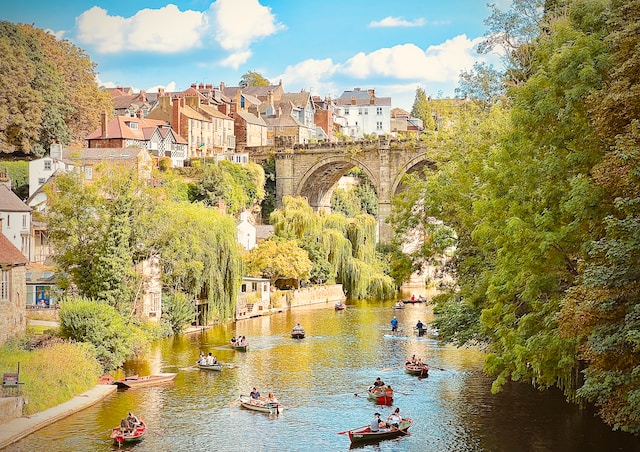
With its winding streets, spectacular stone viaduct over the River Nidd and inner-town greenery, Knaresborough is easily one of the most picturesque places in Yorkshire if not the whole of England.
The aforementioned river splits the town into two. On one side of the valley are beautiful houses and cafes that rise up the hill, while on the other is a thick woodland that is home to an abundance of wildlife.
Hidden away in that wood is Mother Shipton’s cave. This magical place has been open to the public since 1630 and claims to be England’s oldest tourist attraction.
Mother Shipton, originally named Ursula Sonthiel, was born in the cave when the land formed part of a royal hunting ground in 1488. Little is known about her parents, but legend has it that her mother was just 15 when she gave birth and had no family or friends to support her so she tried to bring Ursula up in the cave.
When Ursula was still a child the Abbott of Beverley arranged for her to be live with a local family in Knaresborough while her young mother was sent off to a nunnery, where she later died.
Ursula was said to be a very strange girl and had a long and crocked nose giving her the appearance of a witch. With few friends she would regularly go back to the cave and began making potions with the flowers she picked from the wood.
When she got older she discovered that she had another talent – successfully predicting the future. It is claimed that she correctly prophesised many events including the Great Fire of London in 1666 and the defeat of the Spanish Armada.
Inside the cave today you can take a self-guided audio tour and visit a small museum that explains all of Mother Shipton’s prophesies. You can also see the Petrifying Wall, which has minerals capable of turning everyday items in stone in just a few months thanks to a process known as calcification.
Mother Shipton, it seems, wasn’t the only local that dwelled in caves while boasting mysterious powers. According to local legend there was a hermit named Robert Flower that could miraculously heal the sick. This earned him the name “St Robert” in Knaresborough.
It is claimed that King John visited him as well as a number of nobles that were looking for spiritual guidance. His cave can also be visited and while it has less to see than at Mother Shipton’s, it is still an interesting site and has been made a Scheduled Ancient Monument.
Accommodation In Knaresborough
Booking.comDespite these two historic sites, the key attraction in Knaresborough is without question its 12th century castle. Now in ruins, the fortress has a rich history and has housed a number of well-known historical figures.
The murderers of the Archbishop of Canterbury Thomas Becket spent time hiding within its walls during the winter of 1170-71, while Edward III and King John were known visitors and Richard II was imprisoned at the castle after losing the crown in 1399.
It was in use for more than 500 years and served as a key garrison during the English Civil War. However, it was largely destroyed in 1648 when parliament ordered for Royalist castles to be dismantled. It is believed that many buildings in the town were built using stone that was plundered from the castle.
The castle has underground tunnels and a dungeon to explore, with both likely to have extremely murky pasts. A medieval day featuring sword fighting and horse shows is held in the castle grounds each June.
Knaresborugh is close to both the Yorkshire Dales and Nidderdale, an Area of Outstanding Natural Beauty, so it makes a good base for walkers and cyclists as well as history buffs.
The town has a mix of accommodation types available, including luxury hotels, quaint and cosy cottages, delightful guest houses and sites for both camping and caravanning.
